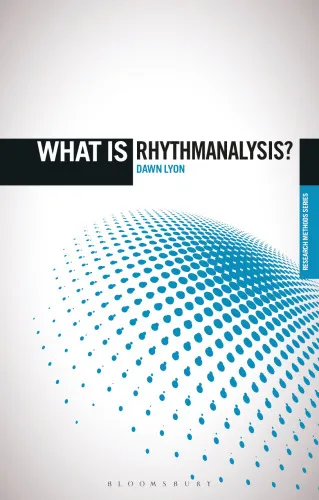What is Rhythmanalysis?
4.6
Reviews from our users

You Can Ask your questions from this book's AI after Login
Each download or ask from book AI costs 2 points. To earn more free points, please visit the Points Guide Page and complete some valuable actions.Analytical Summary
The book What is Rhythmanalysis serves as a thorough exploration into the concept of rhythms as they occur in both time and space, and how these patterns govern daily life, urban environments, and social interactions. Drawing from theoretical foundations established in philosophy, sociology, and urban studies, the work elucidates how recurring temporal patterns manifest in physical places and influence the human experience.
Rhythmanalysis is positioned as a methodological lens that examines the symphony of cycles that underpin everyday existence — from the heartbeat of a city to the subtle, almost invisible micro-temporalities that guide behavior. Readers are invited into a multi-disciplinary discourse in which rhythm becomes not just an aesthetic or artistic consideration, but a scientific and philosophical tool for decoding the complexity of modern life.
Whether the reader is an academic conducting spatial analysis, a professional involved in urban planning, or a cultural theorist seeking broader interpretations of temporality, What is Rhythmanalysis provides a robust framework. The text’s relevance extends beyond scholarly confines, touching on tangible realities like traffic flows, work schedules, public space usage, and the cyclical nature of economies.
Key Takeaways
By engaging with What is Rhythmanalysis, readers gain not only a theoretical appreciation of rhythms, but also practical insights into observing, interpreting, and applying rhythmic awareness in professional and academic contexts.
The book underscores the interplay between cyclical and linear time, providing a vocabulary to describe phenomena that might otherwise go unnoticed. It illustrates how rhythms operate at multiple scales — from bodily rhythms to planetary cycles — and how each scale interacts with others in complex systems.
Another key point is the necessity of direct observation: rhythmanalysis is not purely abstract, but grounded in experiential engagement with real-world spaces and times. Information such as publication year is unavailable due to no reliable public source, and readers are encouraged to focus on content rather than bibliographic specifics.
Memorable Quotes
Rhythm is the interface between space and time, visible and invisible, lived and felt.Unknown
To listen to a city’s rhythm is to understand its deepest truths.Unknown
Every beat, every pause, contains a world of meaning if one learns to hear.Unknown
Why This Book Matters
What is Rhythmanalysis bridges the gap between abstract philosophical inquiry and practical observation, making it a significant work for contemporary scholarship.
In our fast-paced world, urban rhythms and spatial analysis have become essential fields for understanding societal functions. This book empowers professionals to recognize and work with the temporal structures that form the backdrop to all human activity. It also validates the human need to slow down, observe, and synchronize with the rhythms that nurture balance and productivity.
By presenting rhythmanalysis as both a philosophy and a method, the book paves the way for new research and cross-disciplinary collaboration. Its influence ranges from urban planning to performance studies, from architecture to environmental design — proving that rhythms are as foundational to thinking as they are to living.
Inspiring Conclusion
Ultimately, What is Rhythmanalysis invites readers to see the world through a heightened awareness of the patterns shaping both the visible and invisible dimensions of life.
By adopting the mindset and tools introduced in this work, you can align your professional practice, academic research, or personal growth with the natural and constructed rhythms around you. This is not merely an intellectual exercise — it is a way of reconnecting with the pace of life, fostering a deepened understanding and intentional interaction with the environments we inhabit.
Now is the perfect moment to engage with these ideas: read the book, share its insights with your colleagues, and discuss how rhythms influence your community and industry. In doing so, you will continue the dialogue that What is Rhythmanalysis so skillfully opens.
Free Direct Download
You Can Download this book after Login
Accessing books through legal platforms and public libraries not only supports the rights of authors and publishers but also contributes to the sustainability of reading culture. Before downloading, please take a moment to consider these options.
Find this book on other platforms:
WorldCat helps you find books in libraries worldwide.
See ratings, reviews, and discussions on Goodreads.
Find and buy rare or used books on AbeBooks.


